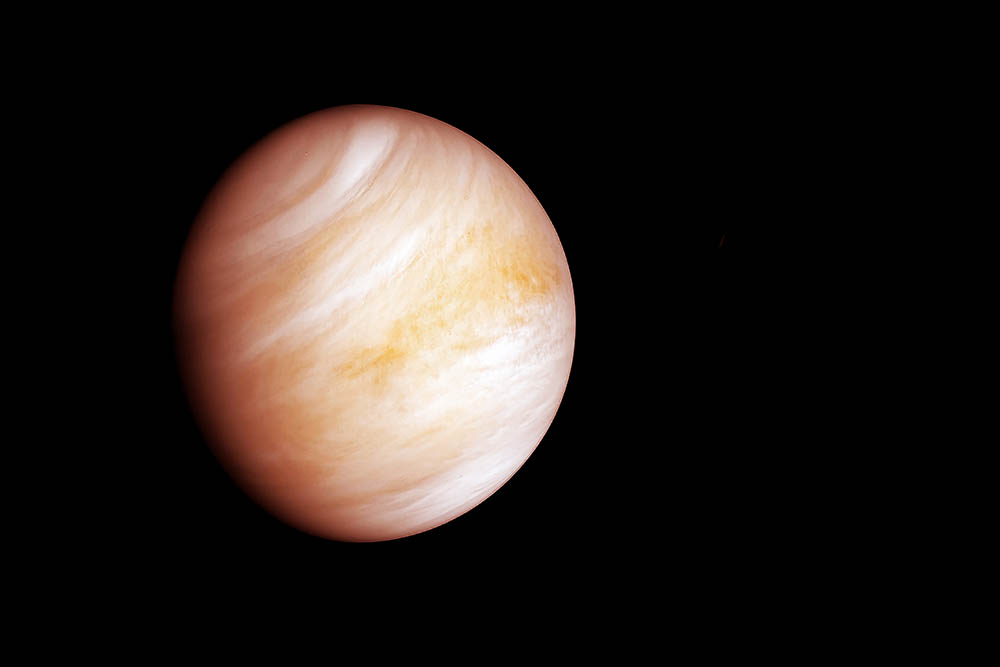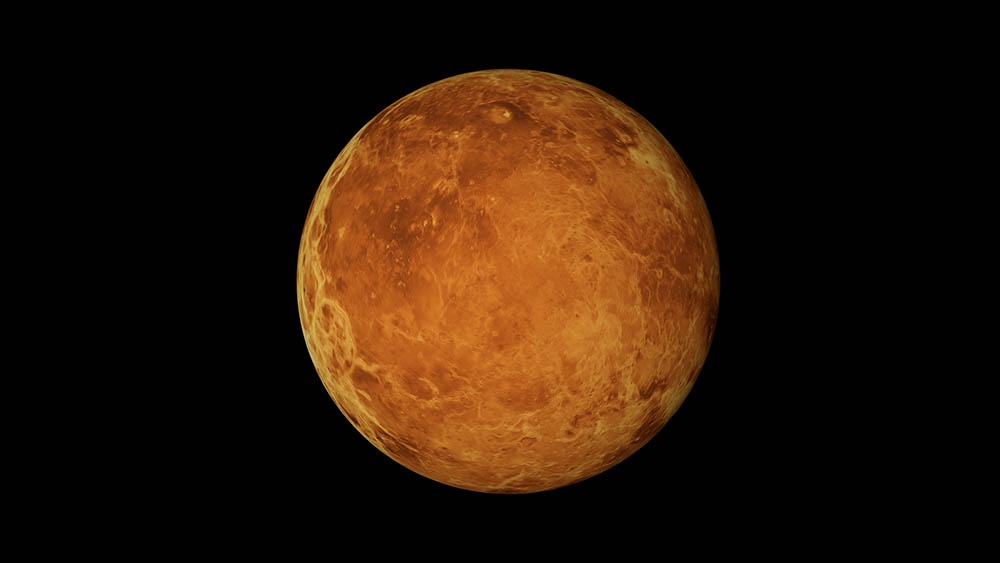How Did Venus Get Its Name? The Answer, Fun Facts & More!
Last Updated on

Venus is sometimes called Earth’s twin because of the similarities in size, mass, and composition. It is the brightest planet we can see at night without special equipment like telescopes. The planet rotates backward and does not support life because it is scorching, and the air there is nearly 100 times thicker than Earth’s atmosphere.
An aspect that makes Venus the brightest planet in the solar system is its thick clouds that reflect up to 70% of the sunlight that hits it. The Romans named the seven brightest objects in the sky, including the sun, moon, and the five bright planets, after important gods. They named the brightest planet Venus, after the Roman goddess of beauty and love.

Understanding the Origins of the Name Venus
Venus is the Roman imperial goddess of love, beauty, fertility, prosperity, and victory. The Romans even considered her their ancestress and the mother of Rome. Under Greek mythology, Venus is known as Aphrodite, the goddess of love.
Ancient people were the first to notice that Venus was the brightest planet visible from Earth with an unaided eye. They tracked the planet’s movements in the sky and noted that it was over ten times brighter than Sirius—the brightest star.
Attributing to the beauty of the planet, the Romans named it after their beautiful goddess of love, Venus.
Venus’s symbol is a circle with a cross at the bottom. The symbol signifies womanhood; hence the Babylonians named the planet Ishtar their goddess of love and womanhood.
Venus orbits around the sun and cannot be seen from Earth from early July. It appears again in September with double its brilliance. The Greek and ancient Egyptians thought the planet had two separate bodies because it appeared like a bright star early in the morning or evening. They named it The Morning Star and The Evening Star.

Venus vs Earth
The main areas where Earth and Venus are similar are their size, mass, and composition. The “sister planets” are also poles apart, mainly in their atmospheres.
Here are some of the stack differences between Venus and Earth.
Size and Mass
Earth boasts a 6,371 kilometers mean radius and about 5,972,370,000 kilograms in mass. On the other hand, Venus’s mean radius is 6,052 kilometers, and the planet has a mass of 4,867,500,000 kilograms. The volumes of Venus and Earth are 928.45 billion cubic kilometers and 1083.21 billion kilometers, respectively.
Orbit
Earth has a more tilted axis than Venus, which puts us more towards the solar ecliptic. Venus orbits closer to the sun, which gives the planet the “greenhouse effect.” Its axis only has a slight tilt, accounting for the minimal temperature variation.

Temperature and Atmosphere
On Earth, air density and pressure decrease as you go higher into the atmosphere. There are five atmospheric layers, which results in temperature and altitude variations as you go further from the surface. Moreover, Earth’s tilted axis creates temperature changes throughout the day and during different seasons.
The surface temperatures in Venus don’t have any significant variations. This is because the planet rotates slowly, has a trivial axial tilt, and has a dense, acidic atmosphere. The temperatures remain virtually the same throughout the day and night, and the planet tends to have significantly shorter seasons than Earth.
Composition
Venus and Earth are pretty similar in their composition and structure. Scientists suggest that, like Earth, Venus has composition layers consisting of the core, mantle, and outer crust. The main difference is that Venus has no plate tectonics, which attributes to the planet’s limited ability to expel heat and cool.
Surface Features
About 70.8% of Earth’s surface is covered in water from natural resources like oceans, rivers, and lakes. Submerged terrains differ, creating areas with oceanic plateaus, undersea volcanoes, submarine canyons, etc. The areas above water also have different landforms, including deserts, plateaus, plains, and mountains. Earth’s surface reshapes over time because of erosion and tectonic activities.
Venus, on the other hand, mainly comprises smooth volcanic plains. There are no significant surface variations, and the planet has no water. Also, the surface does not reshape because Venus lacks tectonic activities.

6 Fun Facts About The Planet Venus:
Venus is named after the goddess of love. It is Earth’s nearest neighbor and shines so bright that we can see it with the naked eye at night. However, Venus is a planet of horrors with one of the most hostile environments.
Here are six interesting facts about Venus:
- Venus has a light yellow appearance. It is covered entirely with a thick cloud of sulphuric acid and carbon dioxide. These elements, plus how the planet absorbs and reflects sunlight, give it a light yellowish hue.
- Venus rarely twinkles. The sun and moon are the brightest objects in the sky. However, Venus is the brightest planet, and its sparkle can even cast a shadow during dark moonless nights. While it may look like a star, it emits oddly steady creamy-white brilliance.
- Venus is Earth’s “evil” twin. Earth and Venus are somewhat similar in their diameter, density, and composition. However, there are stuck atmospheric differences that make them quite different. While Venus has a beautiful name, it has a hostile environment that cannot support plant or animal life.
- Venus is hotter than a wood stove. Temperatures on Venus can get as high as 900 degrees. The planet’s surface is hot enough to melt lead, and the air pressure is nearly 100 times greater than on Earth. Furthermore, the air is 100% carbon dioxide, and the thick clouds act like a blanket creating a “greenhouse effect.”
- Venus smells like rotten eggs. The planet is like a pressure cooker in the galaxy, packed with high temperatures and clouds of sulfuric acid. Scientists claim the planet smells like rotten eggs.
- A day on Venus is like 243 days on Earth. Venus rotates slowly, meaning it takes longer to spin once on its axis. Interestingly, a day on Venus is longer than one year. It takes 225 Earth days for the planet to complete one orbit of the sun.

Final Thoughts
Venus has a bright and shiny appearance in the sky, and it is no surprise that the Romans named it after the beautiful goddess of love and beauty. Ancient astronomers identified Venus as the brightest of the five planets visible with the naked eye from Earth.
Even though Venus is named after a stunning goddess and is Earth’s closest planetary neighbor, it is not a charming place. It is the solar system’s hottest planet, and scientists claim it has 37 active volcanic structures.
Featured Image Credit: Artsiom P, Shutterstock
About the Author Robert Sparks
Robert’s obsession with all things optical started early in life, when his optician father would bring home prototypes for Robert to play with. Nowadays, Robert is dedicated to helping others find the right optics for their needs. His hobbies include astronomy, astrophysics, and model building. Originally from Newark, NJ, he resides in Santa Fe, New Mexico, where the nighttime skies are filled with glittering stars.
Related Articles:
Can You Use Binoculars to Look At Stars? How to Choose the Right Pair
15 Crucial Facts About Ultraviolet Rays & the Sun
What Constellation Is Spica In? The Interesting Answer!
10 Interesting Leo Constellation Facts, Myths, and FAQs
15 Interesting Pegasus Constellation Facts, Myths, and FAQs
6 Interesting Sagittarius Constellation Facts, Myths, and FAQs in 2024!
What Are Constellations? Where Did They Come From?
8 Interesting Libra Constellation Facts, Myths, and FAQs
